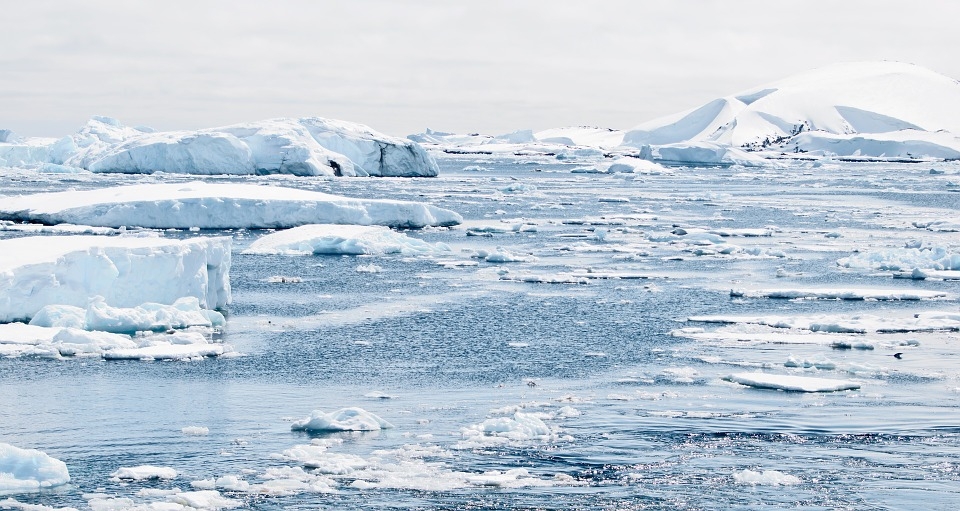Climate change is another issue that many are trying to spread awareness about, with global warming taking its toll on the global temperatures and on the polar regions. Now, NASA has revealed that the ice caps are melting faster than usual, leading to a faster rise in sea levels.
The agency has warned that the rate of the ice caps melting is increasing, and it could potentially lead to a snowball effect. This comes after NASA has monitored the Arctic region in the Norwegian archipelago of Svalbard, noticing that a small glacier is thawing at an accelerated rate. The agency has also kept tabs on the effects of the ice melting in Greenland and Antarctica.
“Seven of the regions that dominate global ice mass losses are melting at an accelerated rate, a new study shows, and the quickened melt rate is depleting freshwater resources that millions of people depend on,” said the agency. NASA also noted that the ice that is melting in Alaska, High Mountain Asia, the Canadian Arctic Archipelago, the Southern Andes, the Russian Arctic, Svalbard, and Iceland was a big factor in the rising sea levels in the 20th century.
Climate change continues to become an issue as the planet warms even more. Scientists noted that global temperatures are rising by 0.15 to 0.20 degrees Celsius every decade. From 1993 to 2014 alone, the sea levels rose by 2.3 inches every year. This would potentially result in coastal cities like New York to be submerged by the turn of the century.
This will also affect several parts of the United Kingdom, which could be subject to heavy flooding caused by the melting ice caps or even become submerged over time. Deal, Whitstable, Sittingbourne, Boston, Margate, Sandwich, Hearne Bay, Low Weald, West Mersea, Orford, Mablethorpe, Theedlethorpe, Sots Hole, Brigg, Wainfleet, Friskney, and Scrane End are the places that are the most at risk of flooding due to the rising sea and river levels.
However, more areas of the UK are also at risk should the sea levels rise by four meters. Parts of Kent, East and West Sussex, Yorkshire, Lincolnshire, Essex, Suffolk, London, Cambridgeshire, Merseyside, Somerset, and Gwynedd are at risk, with Kent having the most areas that are at risk.



 Why is the universe ripping itself apart? A new study of exploding stars shows dark energy may be more complicated than we thought
Why is the universe ripping itself apart? A new study of exploding stars shows dark energy may be more complicated than we thought  Genetic diseases: How scientists are working to make DNA repair (almost) a piece of cake
Genetic diseases: How scientists are working to make DNA repair (almost) a piece of cake  Could a telescope ever see the beginning of time? An astronomer explains
Could a telescope ever see the beginning of time? An astronomer explains  Spacesuits need a major upgrade for the next phase of exploration
Spacesuits need a major upgrade for the next phase of exploration  Eggs from men, sperm from women: how stem cell science may change how we reproduce
Eggs from men, sperm from women: how stem cell science may change how we reproduce  The mystery of consciousness shows there may be a limit to what science alone can achieve
The mystery of consciousness shows there may be a limit to what science alone can achieve  The rising flood of space junk is a risk to us on Earth – and governments are on the hook
The rising flood of space junk is a risk to us on Earth – and governments are on the hook  Six space missions to look forward to in 2024
Six space missions to look forward to in 2024  Orbital resonance − the striking gravitational dance done by planets with aligning orbits
Orbital resonance − the striking gravitational dance done by planets with aligning orbits  Customizing mRNA is easy, and that's what makes it the next frontier for personalized medicine − a molecular biologist explains
Customizing mRNA is easy, and that's what makes it the next frontier for personalized medicine − a molecular biologist explains  Larger and more frequent solar storms will make for potential disruptions and spectacular auroras on Earth
Larger and more frequent solar storms will make for potential disruptions and spectacular auroras on Earth  Dark energy is one of the biggest puzzles in science and we're now a step closer to understanding it
Dark energy is one of the biggest puzzles in science and we're now a step closer to understanding it  What is minoxidil, the anti-balding hair growth treatment? Here’s what the science says
What is minoxidil, the anti-balding hair growth treatment? Here’s what the science says  How do airplanes fly? An aerospace engineer explains the physics of flight
How do airplanes fly? An aerospace engineer explains the physics of flight  Our survey of the sky is uncovering the secrets of how planets are born
Our survey of the sky is uncovering the secrets of how planets are born 






























